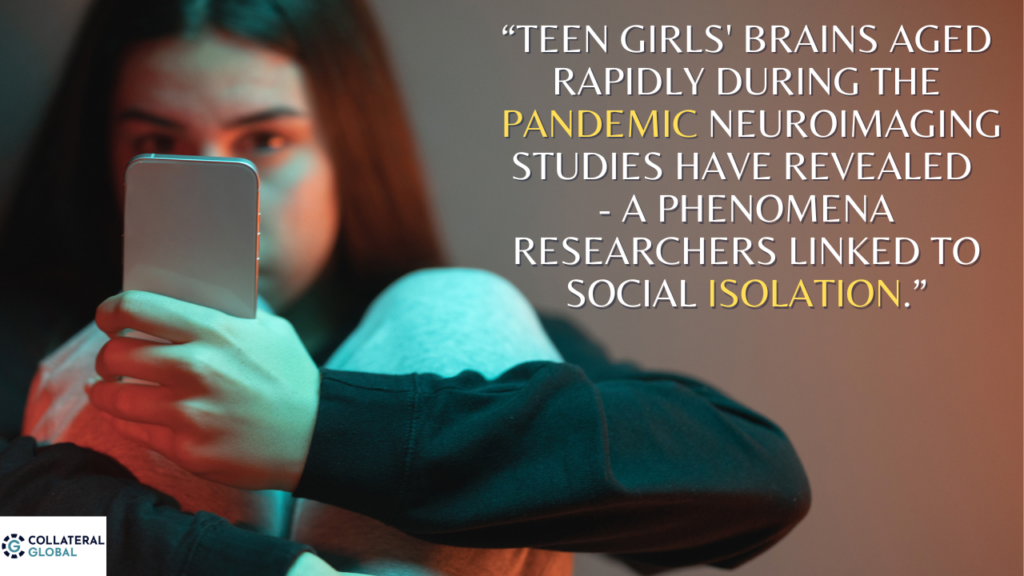Teen brains “structurally” altered by lockdowns in pattern linked to chronic stress
Teen girls’ brains aged rapidly during the pandemic neuroimaging studies have revealed – a phenomena researchers linked to social isolation.

A study of adolescent brain development, published today, is borne out by previous research which shows girls experienced cortical thinning faster than boys during the first year of the covid lockdowns. This US based research, published in the Proceedings of the National Academy of Sciences, tested children before and after coronavirus pandemic lockdowns and measured cortical thinning, a process that starts in either late childhood or early adolescence, as the brain begins to prune redundant synapses and shrink its outer layer.
The brains of adolescents who were assessed after the pandemic lockdowns ended appeared several years older than teens assessed before the pandemic. Until now, such accelerated changes in “brain age” have only been seen in children experiencing chronic adversity, such as neglect and family dysfunction, and have sometimes been linked with depression and anxiety.
Scans taken in 2021, after lockdowns started to lift, showed both boys and girls had experienced rapid cortical thinning during that period. But the effect was more notable in girls, whose thinning had accelerated, on average, by 4.2 years ahead of what was expected; the thinning in boys’ brains had accelerated 1.4 years ahead of what was expected. “That is a stunning difference,” said Prof Patricia Kuhl, director of the Institute for Learning and Brain Sciences at the University of Washington and one of the study’s authors.
Prof Kuhl attributed the change to “social deprivation caused by the pandemic,” which she suggested hit adolescent girls harder because they are more dependent on social interaction — in particular, talking through problems with friends — as a way to release stress.
The researchers began with a cohort of 160 children and adolescents, with the goal of characterizing typical changes during the teenage years. They took their first measurements in 2018, when their subjects ranged in age from 9 to 17. By 2021, all their subjects were emerging from a period of prolonged stress.
Around 130 of the subjects returned for a second round of testing, which the team compared with a model that predicted typical brain development in adolescence.
The study is echoed by previous research from Stanford University which also suggested that pandemic-related stressors physically altered adolescents’ brains, making their brain structures appear several years older than the brains of comparable peers before the pandemic. The study published in Biological Psychiatry in December 2022, compared MRI scans from a cohort of 163 children taken before and during the pandemic, It showed the developmental process sped up in adolescents as they experienced the COVID-19 lockdowns.
Lead author of this study, Ian Gotlib, Professor of Psychology, said adolescents assessed after the lockdowns had more severe mental health problems, as well as reduced cortical thickness…and more advanced brain age.
“These findings might also have serious consequences for an entire generation of adolescents later in life, said Jonas Miller, Assistant professor of psychological sciences at the University of Connecticut.
He added: “Adolescence is already a period of rapid reorganization in the brain, and it’s already linked to increased rates of mental health problems, depression, and risk-taking behavior,”
Miller said.
“Now you have this global event that’s happening, where everyone is experiencing some kind of adversity in the form of disruption to their daily routines – so it might be the case that the brains of kids who are 16 or 17 today are not comparable to those of their counterparts just a few years ago.”
